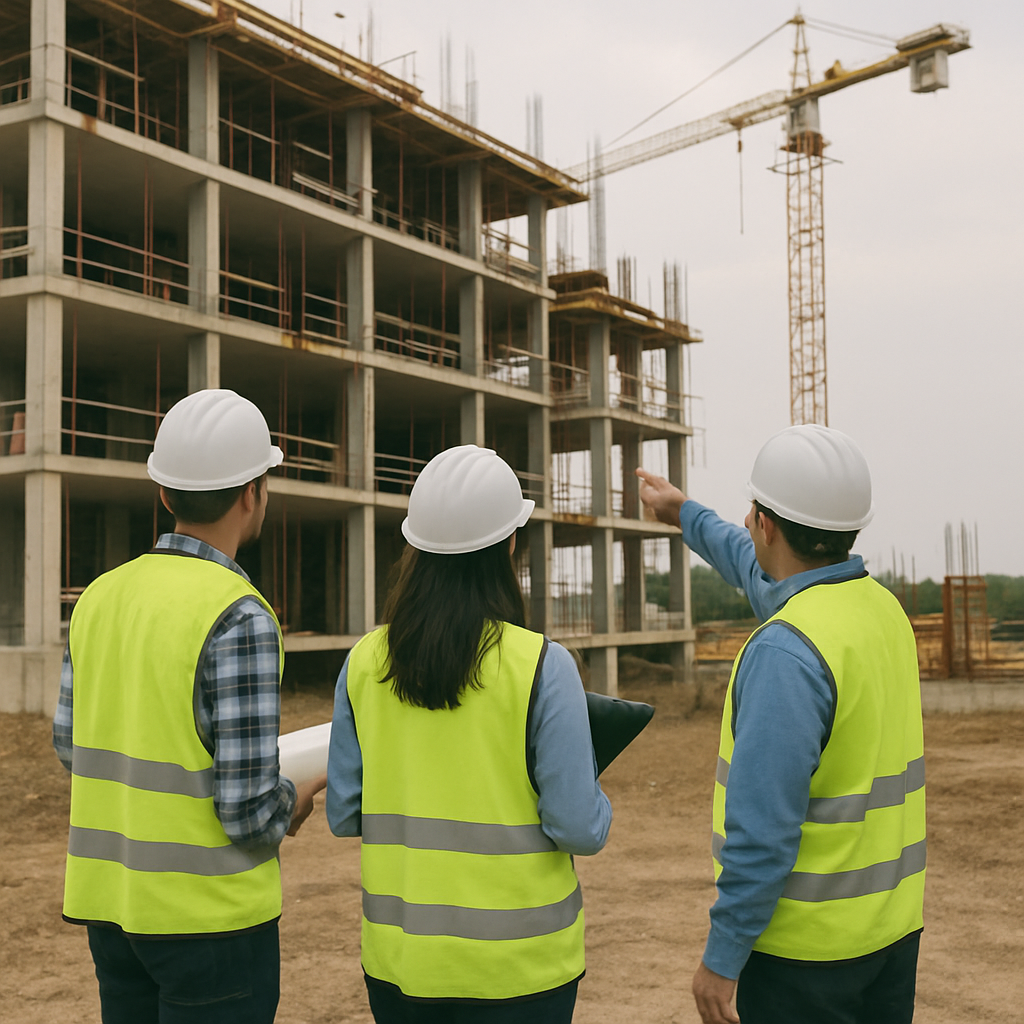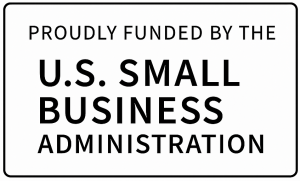Construction inspections are crucial for any building project. They ensure safety, compliance, and quality. Skipping them can lead to costly delays and failures.
Understanding the different types of inspections is vital. Each serves a unique purpose in the construction process. From structural to electrical, every inspection matters.
Special inspections, as outlined in IBC Chapter 17, are particularly important. They address specific aspects of construction that require expert attention. Ignoring them can result in significant setbacks.
Common inspection failures can derail a project. Knowing what to expect helps in avoiding these pitfalls. Preparation is key to passing inspections smoothly.
Third-party inspections offer an unbiased perspective. They can identify issues that might be overlooked. Their role is essential in maintaining high standards.
Building code compliance is non-negotiable. It ensures that the project meets local regulations. Failing to comply can have serious consequences.
Effective inspection planning can prevent delays. It involves coordination and communication among all stakeholders. A proactive approach is necessary for success.
In this guide, we will explore top construction inspections. Learn how to avoid common failures and ensure project success.
Why Construction Inspections Matter: Safety, Compliance, and Project Success
Construction inspections serve as the backbone of any successful building project. They ensure that structures are safe, compliant, and built to last. Without them, the risks of structural failures, safety hazards, and legal complications increase drastically.
Inspections also play a critical role in compliance. Adhering to local building codes is mandatory. Compliance not only ensures the legal standing of a project but also protects against potential fines and reconstruction costs.
In addition to safety and compliance, inspections contribute to project success. They help maintain high standards of construction quality. Through regular checks, potential defects and issues are caught early.
An effective inspection plan includes various types of building inspections. These may cover everything from structural to mechanical systems. Each aspect of a building’s construction is scrutinized to ensure quality.
Here are key reasons why construction inspections are essential:
- Safety assurance
- Legal compliance
- Cost efficiency
- Quality control
- Risk management
Failing to conduct thorough inspections can lead to costly mistakes. It’s a vital step that no construction project should ignore.
Understanding Construction Permit Inspection Requirements
Securing a construction permit is a crucial initial step in any building project. Permit inspections ensure that the planned work complies with all zoning and safety regulations. Each project type comes with its own set of criteria that must be satisfied.
Different types of inspections fall under the permitting process. Commonly, these include site inspection, structural checks, and safety assessments. All aspects aim to ensure that the project meets established standards before work begins.
Permit inspection requirements can vary by location and project scope. Knowing these requirements beforehand helps in preparing the necessary documentation. This also facilitates a smoother approval process, reducing delays in project kick-off.
Here’s a breakdown of typical construction permit inspection requirements:
- Site plan approval: Ensures the project matches zoning laws.
- Structural analysis: Validates the integrity of the proposed structure.
- Safety compliance: Checks adherence to health and safety regulations.
- Utility checks: Ensures proper planning for water, sewage, and electricity.
Understanding these fundamental requirements is key to project success. Properly navigating the permit inspection process helps avoid legal issues and ensures project timelines remain intact.
Essential Types of Building Inspections Every Project Needs
Building inspections are vital checkpoints throughout a construction project. They ensure every aspect meets industry standards. Various inspection types focus on different project areas.
Each inspection type serves a unique purpose. From the structural framework to the final touches, inspections verify quality and compliance. This keeps the project safe and on track.
A comprehensive inspection approach starts with key foundational checks. These inspections analyze core elements integral to a building’s strength and durability. Missing these steps can lead to severe structural issues later.
Here’s a list of essential building inspections to plan:
- Structural inspections: Focus on framing and foundational integrity.
- Mechanical inspections: Cover HVAC systems for functionality.
- Electrical inspections: Ensure safety and code compliance.
- Plumbing inspections: Verify that water systems meet standards.
- Fire safety inspections: Check for adequate firefighting and smoke alarm systems.
Without these inspections, risks of failure and project delays increase. They provide an invaluable review to catch potential problems early. Inspections are a proactive measure, minimizing future liabilities.
Identifying and correcting issues during inspections saves time and cost. These reviews build confidence, ensuring a project’s enduring success.
Structural and Concrete Inspection: The Foundation of Quality
Structural inspections form the backbone of any building project. They assess the critical components ensuring safety and longevity. Structural integrity begins at the foundational level, where quality counts most.
Concrete inspections particularly focus on the strength and placement of materials. Proper concrete pours are crucial for load-bearing capabilities. These assessments avoid costly repairs down the line.

Regular structural inspections address potential weaknesses early. Engineers rely on these checks to ensure that designs translate accurately to reality. Issues, if neglected, can lead to severe failures.
Implementing thorough structural inspections promotes project confidence. It minimizes the likelihood of defects, supporting long-term asset value.
Electrical, Plumbing, and HVAC Inspections: Systems That Can’t Fail
Mechanical and electrical systems are the lifelines of a building. Ensuring these systems operate smoothly is essential. Electrical inspections reduce risks of fire hazards and ensure energy efficiency.
Plumbing inspections cover all aspects of water supply and drainage. Faulty plumbing can result in leaks or water damage. These checks ensure proper installation and compliance.
HVAC systems, crucial for climate control, require rigorous testing. Performance and energy efficiency are key focus areas during inspections. A failure in these systems can disrupt building comfort significantly.
Overall inspections for these systems prevent many issues. Regular checks confirm that each system meets current standards, ensuring optimal operation. These inspections also contribute to energy savings, further enhancing building efficiency.
Special Inspections: IBC Chapter 17 Explained
Special inspections under IBC Chapter 17 play a critical role in construction. These inspections focus on complex features beyond standard scope. They ensure precise adherence to building codes.
Special inspections often target high-risk elements. These can include structural steel welding or fire-resistant systems. Ensuring that specialist materials and techniques meet standards is essential.
Responsibilities for these inspections fall on certified experts. They verify compliance through thorough monitoring and detailed documentation. Their expertise is indispensable for quality assurance.
Typical special inspection areas:
- Fabricated assemblies
- Soil and foundation construction
- Concrete and masonry work
- Fireproofing and sprayed fire-resistant materials

Failing to conduct special inspections can have costly consequences. It might result in structural inadequacies or legal challenges. Incorporating these inspections early helps mitigate such risks.
Organizations should prioritize hiring experienced inspectors. Engage them early in the planning stages to anticipate potential issues. This proactive approach ensures adherence to safety standards and project specifications. Integrating special inspections into the project timeline solidifies a commitment to quality.
Construction Inspection Checklists: Your Roadmap to Passing Every Time
Having a construction inspection checklist is vital. It acts as a roadmap, guiding your team through necessary inspections. This organized approach can ease the process significantly.
A good checklist includes inspection points from start to finish. This ensures no crucial aspect is overlooked. From initial permits to final code compliance, everything is covered.
Regularly updating your checklist is key. Building codes evolve, and so should your checklist. Reviewing it periodically keeps your project aligned with current regulations.
Key elements of an effective inspection checklist:
- Initial site conditions
- Foundation and structural elements
- Mechanical and electrical systems
- Completion and safety inspections
An effective checklist doesn’t just help pass inspections. It also enhances overall construction quality. By adhering to it, your project remains safe and compliant from the ground up. This proactive method prevents errors and delays, saving time and resources.
Common Inspection Failures and How to Avoid Them
Inspection failures can lead to costly project delays. Understanding common pitfalls can help prevent these issues. Being proactive in addressing potential problems is essential.
Misunderstanding building codes is a frequent cause of failure. Many project managers overlook this detail. Proper training and continuous education can resolve this easily.
Communication gaps often lead to inspection oversights. Ensuring all team members are on the same page is crucial. Regular meetings and clear documentation can bridge these gaps.
Common inspection failures include:
- Inadequate site preparation
- Poor workmanship
- Non-compliance with building codes
- Insufficient documentation

Regular self-assessments can highlight potential failures early. By identifying weaknesses ahead of inspections, teams can implement corrective measures promptly. This practice fosters a culture of continuous improvement.
Finally, engaging with third-party inspectors can provide a fresh perspective. They offer unbiased assessments, assisting in identifying overlooked issues. This external review can be invaluable, especially for complex projects.
Third-Party Construction Inspections: When and Why to Use Them
Third-party inspections provide an objective evaluation of a construction project. They are crucial when internal assessments might carry bias. Engaging an independent inspector enhances credibility and trust.
Complex projects often require third-party inspections. These projects involve varied systems and intricate compliance needs. An unbiased eye ensures all aspects meet industry standards.
When facing tight deadlines, third-party inspectors can help identify delays. They provide an extra layer of quality control. Their expertise in spotting potential issues prevents overlooked problems from escalating, ultimately supporting successful project delivery.
Building Code Compliance Inspections: Staying on the Right Side of the Law
Staying compliant with building codes is non-negotiable. Code violations can lead to hefty fines and project delays. Compliance ensures a project meets all safety and structural standards.
Building code compliance inspections verify that construction adheres to local regulations. These inspections cover all project phases. Failing any can halt progress until issues are resolved.
Regular compliance checks reduce risks and enhance safety. They ensure the project’s legality and longevity. Adhering to codes also reflects a commitment to quality and professionalism, ultimately protecting stakeholders from legal repercussions.
How to Pass a Building Inspection: Pro Tips for Success
Passing a building inspection requires preparation and detail. Start by understanding local regulations and requirements. This knowledge forms the groundwork for a successful inspection.
Conduct a pre-inspection to catch potential issues early. Identify and address problems before the inspector arrives. This proactive step can help avoid unnecessary delays.
Ensure all documentation is complete and up-to-date. Accurate records demonstrate compliance and readiness. Organize permits, blueprints, and previous reports for easy access during the inspection.
Communicate with your team effectively. Clear guidance reduces errors and enhances coordination. Encourage open dialogue to resolve any uncertainties promptly.
Key Tips to Pass Inspections:
- Understand local codes: Study the regional requirements thoroughly.
- Pre-inspect and repair: Fix issues before the formal check.
- Document management: Keep all permits and records organized.
- Enhance communication: Maintain clear communication among team members.
These strategies help streamline the inspection process, ensuring success and efficiency.
Avoiding Construction Delays: Inspection Planning and Quality Control
Avoiding construction delays hinges on effective inspection planning. A proactive approach in scheduling inspections reduces potential project hold-ups. This careful planning aligns the inspection schedule with construction milestones.
Quality control is integral to smooth project flow. Consistent monitoring ensures construction quality meets required standards. Address discrepancies swiftly to prevent costly corrections.
Create a comprehensive inspection plan detailing each inspection phase. Assign responsibilities and deadlines to streamline operations. This plan acts as a roadmap, reducing the risk of missed inspections.
Implement a quality control checklist to maintain standards. Focus on key areas like materials, workmanship, and safety. Regular checks help keep the project on track.
Essential Steps to Prevent Delays:
- Schedule proactively: Align inspections with project stages.
- Monitor quality: Implement stringent quality control measures.
- Create detailed plans: Outline responsibilities clearly.
- Use checklists: Maintain standards consistently.

These strategies help avoid costly delays, ensuring projects stay on schedule and within budget.
The Role of Documentation and Communication in Inspection Success
Documentation is the backbone of successful inspections. Accurate records of procedures, materials, and changes ensure clear information flow. This clarity helps in quickly addressing issues and maintaining compliance.
Effective communication minimizes misunderstandings and errors. Regular updates between construction teams and inspectors build trust. Establish clear communication channels for prompt issue resolution.
Both documentation and communication foster a culture of transparency. They contribute significantly to inspection success. Keeping everyone informed creates a cohesive team focused on quality and compliance.
Future Trends: Technology and the Evolution of Construction Inspections
Technology is transforming construction inspections. Drones, AI, and digital tools improve accuracy and efficiency. These advancements allow faster data collection and analysis. Inspectors can identify issues earlier, preventing costly delays and rework.
The integration of technology into inspections promises even greater advancements. Real-time updates and remote inspections streamline processes. As tools evolve, they will enhance compliance and safety, shaping the future of construction quality control.

Conclusion: Building a Culture of Quality and Compliance
Creating a culture of quality in construction starts with prioritizing inspections. Regular and thorough checks prevent issues and ensure compliance.
Commitment to inspections enhances safety and builds trust with clients. When teams embrace inspections, project outcomes improve, and the likelihood of costly failures diminishes.






